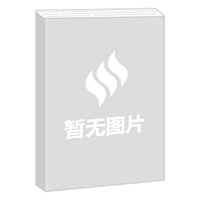- ISBN:9787560666204
- 装帧:一般胶版纸
- 册数:暂无
- 重量:暂无
- 开本:26cm
- 页数:498页
- 出版时间:2023-01-01
- 条形码:9787560666204 ; 978-7-5606-6620-4
内容简介
This book comprehensively and deeply introduces the semiconductor device principle and technology. The book consists of three sections: semiconductor physics and devices, semiconductor manufacturing process and semiconductor packaging,testing and simulating. The first section mainly introduces semiconductor physics foundation, diode, bipolar junction transistor, MOS field effect transistor, power MOSFET, thyristor, IGBT, passive device and SPICE model. The second section mainly introduces semiconductor process technology, semiconductor process simulation and film preparation technology. The third section mainly introduces semiconductor packaging, testing and simulating technology. These contents will lay a solid foundation for further mastering the basic theories and methods of analysis, design, manufacturing, packaging and testing of semiconductor devices. This book can be used as a textbook for undergraduate and graduate students who are engaged in the analysis, design, manufacturing, packaging and testing of semiconductor devices and IC design. It can also be used as a selfstudy and reference book for professional engineers.
目录
-

一个人的香火龙
¥13.0¥18.0 -

税率变动与FDI空间分布--基于我国企业所得税改革的实证研究/中国经济发展系列/中南财经政法大学双一流建设文库
¥19.1¥42.0 -

东方智慧丛书孟子选译(汉越对照)
¥58.0¥89.0 -

马云大传
¥16.1¥39.8 -

中亚研究-2017年第2期 总第5期
¥44.5¥58.0 -

抽水蓄能电站通用设计:地下洞室群通风系统分册
¥57.2¥78.0 -

世界思想史20世纪思想史:从弗洛伊德到互联网/(英国)彼得.沃森
¥153.8¥248.0 -

美国经典物理科学启蒙全书:这就是物理—热
¥10.4¥20.0 -

中国企业最低工资经济效应研究
¥31.4¥38.0 -

等待舞曲再次响起
¥17.0¥29.0
-

发电厂电气部分
¥38.1¥58.0 -

植物进化的故事
¥19.9¥59.0 -

数控车工
¥5.9¥11.5 -

小家电使用与维修
¥4.3¥11.5 -

低空无人机集群反制技术
¥82.6¥118.0 -

奋楫笃行,臻于至善——广州公交服务再提升探索与实践
¥65.0¥80.0 -

数据驱动的剩余寿命预测与维护决策技术
¥63.4¥79.0 -

手术机器人导航与控制
¥127.4¥169.8 -

汽车车身构造与修复
¥30.7¥45.0 -

群目标分辨雷达初速测量技术
¥42.4¥69.0 -

秸秆挤压膨化技术及膨化腔流道仿真研究
¥40.6¥55.0 -

NVH前沿科技与工程应用
¥109.7¥159.0 -

电力系统分析
¥23.8¥38.0 -

继电保护原理
¥30.4¥49.0 -

不确定条件下装备剩余寿命预测方法及应用
¥60.4¥99.0 -

孟山都的转基因之战
¥39.0¥69.0 -

船舶分段装配
¥58.6¥80.0 -

基于深度学习的复杂退化系统剩余寿命智能预测技术
¥54.4¥89.0 -

火星探测器轨道动力学与控制
¥59.8¥98.0 -

工程造价全过程管理系列丛书 工程结算与决算 第2版
¥39.6¥56.0













